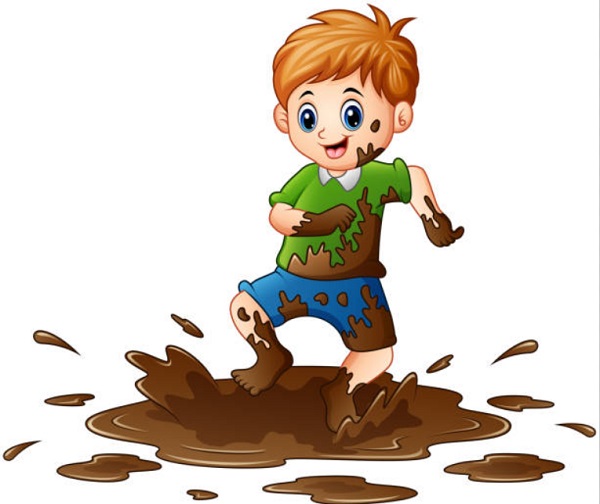
A little dirt and water can create mud, as well as limitless opportunities for children to play and learn, according to Cindy Thompson, a human sciences specialist with Iowa State University Extension and Outreach.
“Mud is squishy, slimy, sloppy and wonderful! The joy children experience playing in mud is second only to the many benefits associated with mud play,” said Thompson, who specializes in family life issues.
Health Benefits – “There is an assumption that mud is full of germs and harmful to children,” said Thompson. “Not all germs, however, are bad. Many germs actually boost immune systems.”
Early childhood experts, including those with the Mayo Clinic Children’s Center, say exposure to germs found in outdoor elements like grass and mud help build a stronger immune system, especially in young children. Friendly bacteria in the body can also get a boost from mud play.
Learning Benefits – The benefits of mud for children go beyond their immune systems,Thompson noted. “Children learn through their senses: touching, smelling, seeing, listening, and yes, even tasting. The texture and squishiness of mud is completely different than sand or play dough, and mud makes a very unique sound. The way wet mud feels between toes is much different than how mud feels drying on the back of a hand.”
Children can explore many new and amazing sensations only through the characteristics mud provides, Thompson said. Adults can help build children’s vocabulary during mud play by using descriptive words for the sensations children experience. Mud also fosters creativity in children because mud is open-ended – there are many ways children can play with mud and no one right way.
Mud Kitchens – To provide mud experiences for children, consider creating a “mud kitchen,” a dedicated space outdoors for children to discover and explore through mud, Thompson suggested.
Dirt and water are the only two required ingredients, but additional materials and props can extend play. Kitchen items like measuring cups, muffin tins and cookie sheets are great initial additions to a mud kitchen. Paint brushes, buckets and small vehicles also provide new experiences. Some mud kitchens include child size tables and age appropriate garden tools for digging.
“A few basic rules, like no throwing mud, help ensure safe play, and always remember to dress for the mess!” Thompson added.
To explore more ways to support young children’s growth and development, visit the Science of Parenting.
